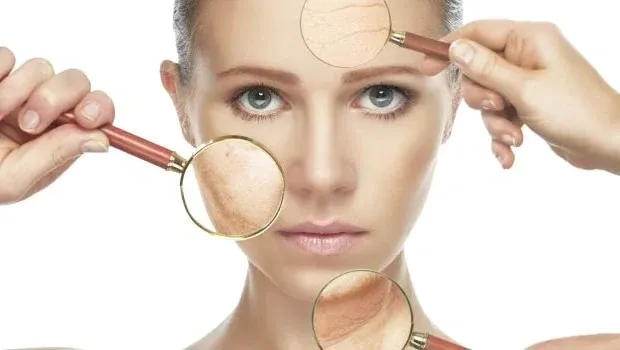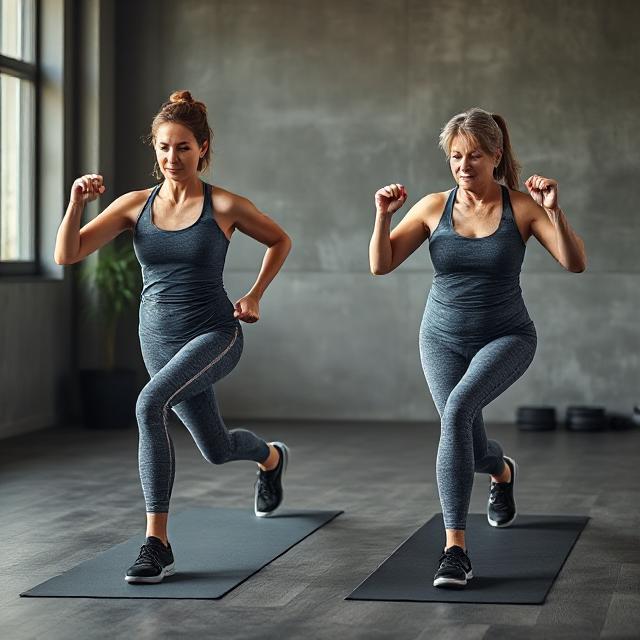Improve skin elasticity

As we age, our skin naturally loses its elasticity, but that doesn’t mean we have to simply accept this fate. There are several steps we can take to improve skin elasticity even in our 40s, 50s, 60s and beyond. It’s never too late to start taking care of your skin and implementing habits that can help maintain and even enhance your skin’s natural elasticity.
One of the primary ways to improve skin elasticity is to ensure you’re properly hydrated. Drinking plenty of water and using moisturizing creams can help keep the skin supple and improve its natural elasticity. Additionally, a healthy lifestyle can do wonders for your skin. Regular exercise promotes healthy circulation, which can help keep your skin looking vibrant and youthful. A balanced diet rich in fruits, vegetables, lean proteins, and healthy fats can also help nourish your skin from the inside out.
Are there nonsurgical ways to reverse this process?
Is it possible to reverse the aging process without surgery?
While we can’t escape from aging unless we’ve had a sip of a mythical youth potion, it’s absolutely possible to decelerate the aging process of your skin. That’s right, you don’t always need a medical professional to fight off sagging. There are numerous strategies you can employ right in the comfort of your own home.
Foods to eat for your skin
Nutrition for Skin Health
Essential fats like omega-3s are crucial for keeping your cells moisturized. These fats also play a role in mitigating inflammation within your body. Other beneficial elements include antioxidants and phytonutrients that assist in safeguarding your cells by diminishing free radicals within your body. So, what foods should you consume to get a good dose of omega-3s, antioxidants, and phytonutrients?
Omega-3 fatty acids
Omega-3 fatty acids These potent nutrients boost your cholesterol levels in a positive way and fight against inflammation. Not only that, but they also aid in maintaining the collagen in your skin, keeping it taut and firm. Here are the top choices for fulfilling this role:
- Herring
- Mackerel
- Salmon
- Tuna (bluefin and albacore)
- Sardines
If you don’t eat fish, here are some plant-based options for an omega-3 boost:
- Flaxseeds — Look for ground flaxseed. Your body doesn’t get as much of the nutrients from whole flaxseed. Mix ground flaxseed into smoothies yogurt or oatmeal.
- Chia seeds — Try making chia seed pudding, add some to a smoothie, or make homemade granola bars.
- Walnuts or almonds — Reach for them instead of your other go-to snacking nuts, or try almond butter with a banana.
- Edamame — Toss these into a salad or stir fry.
- Canola or soybean oil — Canola oil can be used in baking, oven cooking or stir-frying.
Tomatoes for lycopene
Tomatoes are rich in lycopene, a potent antioxidant that aids in maintaining smooth skin. They’re also versatile and can be easily incorporated into a variety of dishes such as salads, sides, sandwiches, and sauces.
Foods that are rich in vitamin C
Numerous fruits and vegetables, besides being a source of antioxidants, are abundant in Vitamin C. This vital nutrient is known to counteract skin aging. Foods particularly high in Vitamin C, beneficial for skin health, include
- Citrus fruit — Oranges, grapefruit, lemons and limes.
- Bell peppers — Green, orange, red or yellow — take your pick.
- Broccoli — Steam or roast (yes, roast!) for an easy, healthy side.
- Strawberries — Snack on them fresh or put some in a simple smoothie.
- Kiwi — Add some to your favorite fruit salad or make veggie kebabs for a fun twist.
Foods that are good sources of vitamin E
Vitamin E, a potent antioxidant, is instrumental in warding off cellular harm. Various foods rich in Vitamin E are beneficial for your skin, such as:
- Almonds — Add them to your snack arsenal or make your own trail mix with them.
- Sunflower seeds — If you’re not a fan of the shells, buy sunflower kernels. Toss them on salads or add to baked goods.
Polyphenols
Unfamiliar with polyphenols? These potent antioxidants are present in numerous food types. Among the foods richest in polyphenols include…
- Tea and coffee — Research has indicated that the polyphenols found in coffee and green tea may aid in thwarting photoaging and hyperpigmentation. It’s important, however, to be aware of your personal caffeine tolerance, or opt for decaffeinated versions when possible.
- Grapes are beneficial as their seeds, skin, and juice are rich in polyphenols such as resveratrol, phenolic acids, anthocyanins, and flavonoids.
- Chocolate — Apart from antioxidants and vitamins, chocolate, particularly dark chocolate, is also rich in flavanols, a form of polyphenol. These compounds help smoothen your skin and guard against damage from the sun. So, it’s a delight to know that consuming a few ounces of chocolate daily is perfectly fine! However, ensure it has a cocoa content ranging from 60% to 70%.
Skin-tightening lotions
While firming lotions shouldn’t be your only skin-tightening strategy, they can contribute to a small but noticeable improvement in skin elasticity. Some even help reduce the visibility of cellulite.
Exercise for your face
If you’re looking for a natural way to lift your face, consider facial exercises. These exercises can be done in the comfort of your home and don’t require any financial investment. They’re often referred to as a “natural facelift”, but don’t expect instant changes. Just like any workout routine, consistency is key for visible results. With over 50 muscles in your face that rarely get used, regular facial exercises can strengthen these muscles and firm up your skin.
Nutritional enhancements
A few specific supplements can boost the health and appearance of your skin. These include:
- Collagen peptides: This supplement has been growing in popularity over recent years because it replenishes the collagen in your body that naturally breaks down over time. It’s available in several forms, including as a drinkable solution. Regular and consistent use can lead to noticeable improvements.
- Vitamin C: As a potent antioxidant, Vitamin C helps repair damaged skin cells, protects the skin from harmful free radicals, and even aids in collagen synthesis.
For the arms and legs
When it comes to combating saggy skin, particularly on the arms and legs, exercise can be a powerful tool. The process involves building muscle mass through weight training exercises, which will significantly help reduce the appearance of saggy skin. This is not just about looking good but also about feeling good and maintaining a healthy lifestyle.
One thing to remember is that toning up your muscles isn’t a quick process, and it requires dedication and consistency. But don’t let that deter you. The journey towards achieving a toned body is as rewarding as the goal itself. Every step you take for your health is a step in the right direction. The satisfaction you gain from seeing progress, no matter how small, is unparalleled.
There’s a wide array of exercises available for you to explore. From squats and lunges for your legs to bicep curls and tricep dips for your arms, you can find exercises tailored to your needs. Remember to start slow if you’re new to weight training. It’s not about lifting the heaviest weights, but about performing the exercises correctly and safely.
Don’t shy away from seeking help. You can always turn to fitness professionals who can guide you in your journey. They can help you figure out the best training regimen that suits your age, fitness level, and specific needs.
In conclusion, don’t let saggy skin get in the way of your confidence. With consistent effort and patience, you can tone up your arms and legs, boost your health, and enhance your overall physical appearance. So why not give it a try? Remember, every rep counts!







